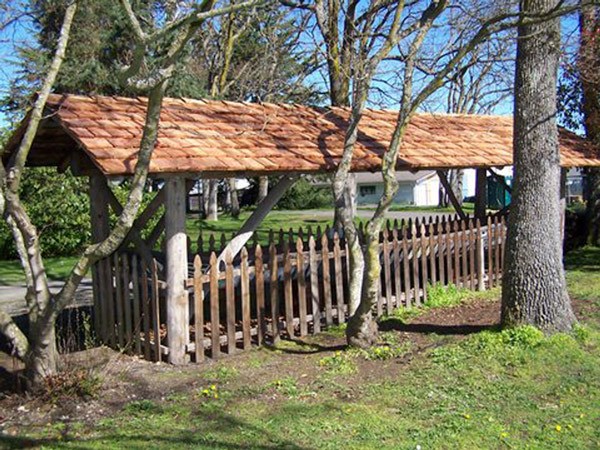Sequim Gazette staff
Thanks to a grant from the Ben & Myrtle Walkling Memorial Trust, the vintage Pysht River canoe shelter at Sequim’s Pioneer Memorial Park has a new cedar shake roof.
The trust donated $3,127 to replace the roof to protect the canoe from the elements and preserve it for the enjoyment of future park visitors, earning praise from the Sequim-Prairie Garden Club and Olympic View Community Foundation.
The antique canoe, donated by Cy Frick to the City of Sequim in 1969, is believed to have been carved by members of the Quileute Tribe.
The preservation of the Native American canoe is part of more extensive capital improvements intended to make Pioneer Memorial Park a meaningful, interpretive park, attractive to county residents and tourists alike.
Overall improvements include a pervious, ADA-compliant trail through the park that would allow visitors of all abilities to meander through the park unhindered by the uneven terrain, the addition of a paved parking lot and protection of more than 70 endangered Garry oak trees that grace the park.
Pioneer Memorial Park is two blocks from downtown Sequim. Once a four-acre cemetery situated along Bell Creek on the Sequim Prairie, in the mid-20th century the land was transformed into a serene 3.76-acre public park lush with flowering foliage, native trees and plants.
Though long ago abandoned as a cemetery, a group of preserved tombstones remain.
Since being leased from the City of Sequim by the Sequim Prairie Garden Club, Pioneer Memorial Park also has become a repository of local history. Over the past 50 years, several large historical artifacts of regional cultural significance have found a new home amid the park grounds. These include an 1890s pioneer log cabin, the Native American canoe and a Jamestown S’Klallam Tribe totem.
An educational sign installed by the garden club in 2015 now serves to inform visitors about these historical items, the park’s history as a cemetery, the native trees and plants found throughout, and the club’s ongoing efforts to ensure that the beauty and serenity of the grounds remain undisturbed.


